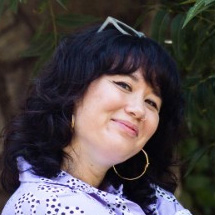Tina Donati, founder and chief storyteller at ContentCurve, is no stranger to being stretched too thin. She started her freelance business while she was still in college to help establish a portfolio and land a job after graduation. It worked, as she found a full-time content marketing role and continued freelancing.
At one point, Tina was commuting 45 minutes each way to her job, working 8 a.m. to 4:30 p.m., going home to wait tables at a friend’s restaurant from 5:30 to 8:30 p.m., and then returning home to work on freelancer projects until 11 p.m. or midnight.
Even when her full-time job went remote and she left the restaurant, she filled her newfound time with more freelance projects — and she held herself to a standard of excellence, quickly becoming known in the e-commerce tech industry for her high-quality work.
“I get really excited when people reach out for projects, and it’s hard for me to say no. But I was doing too much,” Tina recalls. “It’s so important that you know how to read your body language and know the signs of being burned out so you can address it. My grandfather used to say, ‘Even chains will break.’ I used to roll my eyes, but now I understand what he meant.”
From Side Hustle to Self-Employed
While working for yourself might seem like a counterintuitive way to address burnout, it’s working out for Tina. Although she didn’t intend to make freelance work her full-time focus, she’s now kicking herself for not making the leap sooner.
“It felt like a now-or-never situation,” she explains. “It got to the point where my side business was enough to make me feel like I could step away from my job and financially be OK. I figured I might as well give myself a shot and see how it goes. I can still find an in-house job in the future if I don’t like consulting.”
In this new venture as her own boss, Tina’s hoping to scale back on the 70-hour workweeks she was putting in and invest in her mental, physical, and emotional health. “My family was actually telling me that I seemed burned out and that I was acting differently,” she says. “That was a really big sign for me that something had to give.”
Now, Tina feels less of a pressure to continuously say “yes” to projects and earn money. She’s even turned down projects when she knows she lacks the bandwidth to provide the highest quality of work for clients.
Lessons from Going Viral
Tina once wrote a blog post that went viral, garnering 1,000 reads in just 24 hours from just one Tweet.
However, she’s still figuring out what creates a trending moment. There have been times she throws something up on social media and everyone loves it; other times, she spends a lot of time and energy crafting a post that few people interact with.
“I can’t say why people respond the way they do,” she says. However, she did learn two major lessons from her viral moment:
Take Pride in Your Work
The actual content of this particular blog post was about email marketing. The post was a beast to create; Tina interviewed a bunch of people and went through every possible email flow and campaign that retail businesses could create. She shared examples for each one, as well as specific strategies for setting them up and optimizing them.
The morning the post was set to go live, Tina was excited. She got on Twitter and teased the launch with a simple post.
“It was something like, ‘I’m about to drop the biggest blog post on email marketing — who wants it?'” she remembers. She got about 2,000 likes and a bunch of retweets, so when the post went live later that day, she made sure to follow up with a link, triggering more engagement.
Tina suggests that taking pride and showing excitement about your work — as she did with her early-morning teaser — pushes people to check out what you’re doing. Don’t be afraid to tell people what you’ve been up to!
Use Personal and Business Social Media Accounts
The second lesson Tina took away was to leverage your personal brand, not just company social media accounts, where it’s often much harder to build an audience.
“You should absolutely be building those channels, but people resonate with people. They want to hear from people and read things from people,” Tina says. “Because I talked about it on my page, people cared about it more. I don’t think it would’ve hit the same on the company Twitter. I’d recommend getting your team to act as microinfluencers for the content that you’re putting out.”
Don’t Let AI Squander Your Brand Authority!
In all of her content marketing roles, Tina has always preached the importance of strategy. She’s frustrated by CEOs who publicly ask why you can’t just use artificial intelligence to push out thousands of articles.
“I really appreciate the people I work with because they value and understand the importance of content marketing with an expert writer and strategy behind it,” she says. “I’m fed up with people tweeting tips on how to publish tons of articles in one week. I’ve never seen that work out for anyone. You either lose all of your traffic because Google marks you as spam, or you lose brand authority because it’s so obvious your content is AI-written.”
As Tina shared on LinkedIn:
AI can be a helpful tool, of course, but using it to mass-produce content will cheapen your strategy. Instead, Tina argues, marketers should be asking the right questions — questions that ensure you’re producing quality content that attracts quality readers and, ultimately, quality buyers.
Always Ask, “So, What?”
On the topic of AI, Tina points out that it’s super-easy for people to publish, but not as easy to say something worthwhile. “A lot of time, people put words in the universe without understanding why people should care about them,” she says. “They don’t know how to tell stories in a way that’s engaging and persuasive.”
Her philosophy is that your content should always answer the question “So, what?”
By combining storytelling and content marketing, you produce content with identifiable characters who are on a journey.
“You can take people on a story arc through your marketing materials,” she explains. “Here’s this person’s life before. Here’s the initiation and the ‘during’ phase of them discovering a new world and how they can get there. Then, here’s their life now that they’re on the other side of the fence and how much better that is for them.”
Asking “So, what?” helps you understand why your audience might care about your content and how they’ll relate to it. “Adding a character your audience can identify with, telling a story that they’re really feeling, and being the person to hold their hand and walk them through the story — AI cannot do that.”






